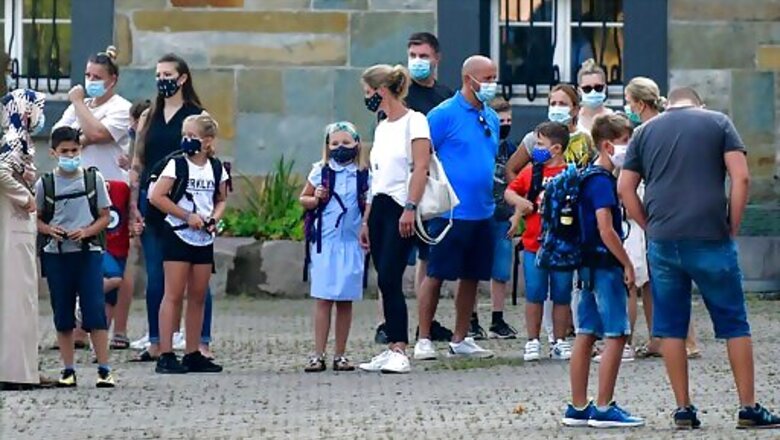
views
GENEVA: Just as millions of children are heading back to school, the World Health Organization says those aged 6 to 11 should wear masks in some cases to help fight the spread of coronavirus.
The recommendations presented Monday follow the widespread belief that children under 12 are not considered as likely to propagate the virus as much as adults. Children in general face less severe virus symptoms than do adults, with the elderly the most vulnerable to severe infection and death.
Now WHO says decisions about whether children aged 6 to 11 should wear masks should consider factors like whether COVID-19 transmission is widespread in the area where the child lives; the child’s ability to safely use a mask; and adult supervision when taking the masks on or off.
Luckily, the vast majority of children who are infected with the virus appear to have mild disease or asymptomatic infection, and thats good news, said Maria Van Kerkhove, technical chief of the U.N. health agency’s emergencies program.
She still cautioned that some children can develop severe cases of coronavirus and even die.
The shift comes as confirmed COVID-19 infections worldwide have surpassed 23 million and confirmed deaths have passed 809,000, according to a tally by Johns Hopkins University. Experts say the tally understates the true toll of the pandemic due to limited testing, missed mild cases and other factors.
The U.N. health agency for months trailed many governments in backing the widespread use of masks, a point not lost on critics, who said WHO was too slow to get on board with the benefits of general mask use. WHO had expressed concern that people who put on masks might unwittingly spread the virus from an unclean hand to their face, and insisted that health-care providers needed masks first amid some shortages.
Since then, researchers have found that the virus can be transmitted through aerosols tiny droplets emitted when people talk, laugh, sing or sneeze and mask-wearing can cut down on the amount of virus that people are exposed to.
Some policymakers, including public transport authorities in Europe and elsewhere, have set the bar for mask-wearing in crowded places like buses and trains at age 12 with everyone older required to put them on.
Acknowledging gaps in both research and understanding of the virus, WHO said kids under age 6 should not wear masks, while those 12 to 18 should wear them just like adults should notably in cases where physical distancing cannot be ensured and in areas of high transmission.
WHO advises a risk-based approach for kids aged 6 to 11 that balances various factors.
Everyone agrees how important it is that schools are operating safely, Van Kerkhove said. “Weve outlined how that can be done in terms of physical distancing and hand hygiene stations, respiratory etiquette, the potential use of masks by either the workers or the children themselves.
WHO said the current evidence suggests virus cases reported from kids stemmed mostly from transmission within households and that documented transmission among children and staff within educational settings is limited.
Parents, health officials and educators in countries around the world have been wrestling with the safety questions posed by having millions of children go back to school during a pandemic.
Over the weekend, Britains top public health officials issued a joint statement saying that children were more likely be harmed by staying away from school than from being exposed to COVID-19.
They said children are less likely to catch COVID-19 than adults and have an exceptionally low risk of dying from the disease. By contrast, they said studies show that not going to school limits childrens ability to succeed in life and may worsen physical and mental health problems.
Very few, if any, children or teenagers will come to long-term harm from COVID-19 due solely to attending school, the medical officers said. This has to be set against a certainty of long-term harm to many children and young people from not attending school.
The recommendations by WHO on Monday also noted lingering uncertainty about the effectiveness of transparent face shields, with WHO calling for more research into their use in response to COVID-19.
___
Danica Kirka in London contributed to this story.
___
Follow APs pandemic coverage at http://apnews.com/VirusOutbreak and https://apnews.com/UnderstandingtheOutbreak
Disclaimer: This post has been auto-published from an agency feed without any modifications to the text and has not been reviewed by an editor
















Comments
0 comment